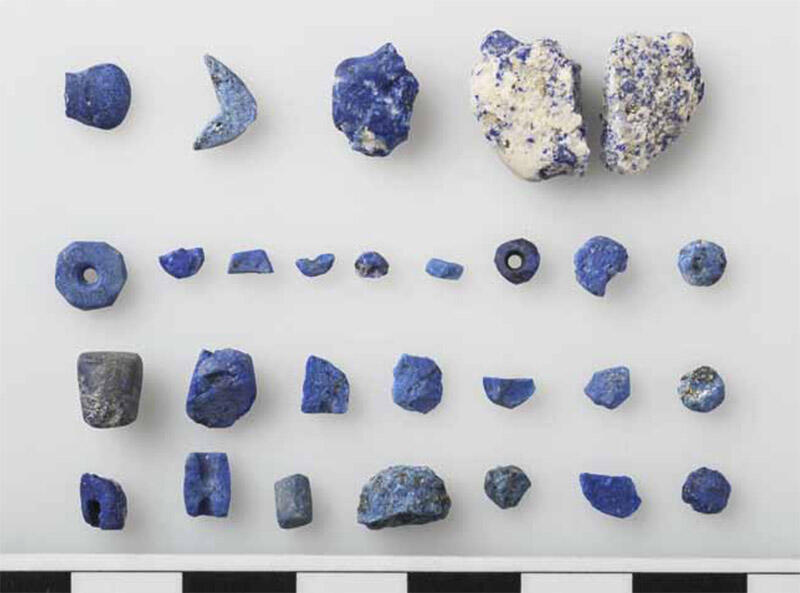Jean-Francois Jarrige (1940-2014) and his wife Catherine (b. 1942) were two of the most important archaeologists in the South Asian region, whose excavations at Mehrgarh, the site in Balochistan which predates the ancient Indus civilization by thousands of years, helped determine how far back the development of various traditions found in that and other regional civilizations actually reached. One such tradition was bead-making, in particular work with lapis lazuli; the pieces above are from the MR.2 workshop at the site excavated by the Jarriges and roughly dated to 4000-3500 BCE, the so-called Togau phase in Balochistan and Khyber Pakhtunkhwa. As the authors write: "The settlement (or settlements) of Period III, like other clusters of late neolithic or chalcolithic Mehrgarh, included mostly the well-known compartmented buildings for storage of cereals, households and workshop areas for various types of goods. site MR.2H, for example, had not less than 190 bone tools, to a great extent made with the bones of onager or Equus hemionus, pointing to a workshop for the production of hides and leather. the field records of MR.2, moreover, report the discovery of pottery-making workshops with millions of sherds [polychrome wares of high technical standards made on the potter’s wheel (Wright 1995)], large open-air pottery firing areas, with warped wasters and fragments of kilns, and dumps of copper-melting crucibles. the unmistakable industrial vocation of site MR.2 is further enhanced by the bead-making area discussed in this article, preliminarily published and illustrated in the Fourth season report (1977–78) in Jarrige et al. (1995: 214, Fig. 4.11)" (p. 234). In other words, there was a wide variety of activity at the site long before the Indus civilization reached its peak, and many of its features and practices, arts and crafts drew on worthy predecessors.
This paper examines the extensive bead-making technologies at Mehrgarh, and its relationship to other contemporary sites like Shar-i-Sokhta in Iran. Microscopic analysis is done on drill-heads at the site and the adhesives used ("a vegetal resin"); indeed, making beads required sophisticated technologies that ancient people seem to have invested a great deal of effort in mastering. It also raises many issues about traditions that may have endured; as the authors conclude: "Did the Indus bead-makers of Mehrgarh and Mohenjo-daro drill their beads in water, or did they have other techniques for dissipating the heat? this is only one of the questions that emerge from the preliminary work we are doing on the collection of microliths, originally gathered by the French colleagues at Mehrgarh. It is both a great pleasure and an honour to acknowledge, once more, the importance of their enduring contribution" (p. 252).
Images: A sample of the lapis lazuli industry from the activity area of Mr.2 (courtesy of J.-F. and Catherine Jarrige; photo by E. Loliva, ISCR, Rome).

